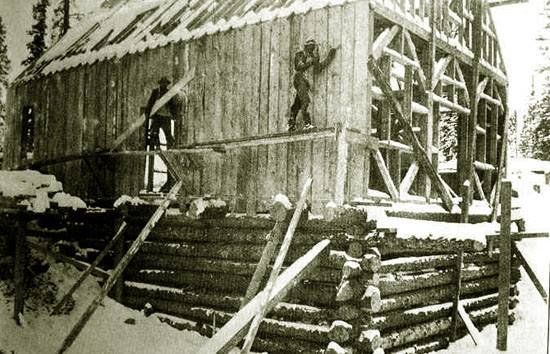Gold discovered in the Medicine Bow Range (1876)
Albany County’s mineral deposits were known from early times. Iron ore from Iron Mountain in the Laramie Range supposedly yielded 85 percent pure metal when first developed. But by the time of a 1921 report on the state’s mineral production, Albany County is mentioned only for gypsum production valued at $3,644.87.
Fifty years earlier, however, great hope was held out for the oil, copper and gold prospects of the Medicine Bow Range. In early 1868, gold was discovered in the interior of the range along what came to be known as Moore’s Gulch. Soon the Last Chance gold camp was established at the present site of Rob Roy Reservoir, near the top of the range. Next, the Douglas Creek District was organized, and in 1869 about 400 ounces of gold were recovered. Draglines were used to recover gold from gravel in the gulches. An estimated 4,000 ounces were recovered, according to a 1994 state geologist report.
From the Centennial Post, 1902. Wyoming Places. Laying track for the Laramie, Hahn's Peak and Pacific Railroad. Wyoming Tales and Trails Gold were discovered along the eastern flank of the Medicine Bow Range in 1874, and the Centennial Ridge District was established there in 1876 (named after the American centennial). But in 1877, the gold vein ran into a fault and prospectors lost track of it, so operations ended with a total production of 4,500 ounces.
The promise of new gold discoveries attracted Boston financier Isaac Van Horn, who with associate Fred A. Miller decided to turn Centennial into a major business center. They established the Laramie, Hahns Peak and Pacific Railway Co. in 1901, with plans to haul ore out of the mountains to Laramie. They built a sawmill and lumber yard and started the Centennial Post newspaper at Centennial.
The railroad finally reached Centennial in 1907, when mining operations in the Medicine Bows had mostly stopped, so the line turned south to carry lumber, cattle, and coal to North Park, Colo. Horn and Miller sold out in 1914. New owners renamed it the Laramie, North Park, and Western Railroad. Eventually, the Union Pacific bought it, and the line ended in 1987.
A third mining district was the Keystone, whose lode was staked in 1876, along with Douglas Creek in the Medicine Bow Range. By 1890, a 40-ton stamp mill was operating there to recover gold. Total gold production was estimated at 5,000 ounces.
The New Rambler mine west of Douglas Creek, near the Carbon County line in southwestern Albany County, produced 6,100 tons of copper ore. In the 1870s, copper and gold were discovered in the hills near the Laramie River in what became known as the Jelm Mountain district, but it was known more for mining scams than production.
Article from Visit Laramie



